Decarbonizing Maritime Shipping: Strategy Report
Summary
- What are shipping emissions and why are they important?
Emissions from maritime shipping currently account for ~3% of global emissions, but could grow substantially under a business-as-usual scenario. The main source of shipping emissions is CO2 released from burning fossil fuels for ship propulsion and operation.
- What do our findings indicate to be the most promising philanthropic pathways for reducing shipping emissions?
Based on our evaluation of scale, feasibility, and funding need, our research prioritizes advocating for national governments to incentivize low-carbon innovation. We also favorably consider sub-strategies advocating for the International Maritime Organization (IMO) to regulate shipping emissions, conducting technical analysis to identify critical technical and market gaps, and mounting legal pressure on institutions to strengthen climate action.
- Is there room for more funding?
We estimate that reducing shipping emissions receives $16-$33 million in philanthropic funding annually, equivalent to less than 1% of total philanthropic climate funding.
Total climate funding from the private and public sectors for shipping totals about $6 billion per year, just 0.2% of the estimated ~$2.6 trillion per year needed for shipping to reach net zero by 2050.
This funding data indicates that efforts to reduce maritime shipping emissions are severely underfunded.
- Are there major co-benefits or potential risks?
Reducing shipping emissions has several co-benefits, such as reducing air pollution and its associated health impacts, and creating potential technology spillovers to other low-carbon transport and heavy industry technologies.
However, alternative fuels are resource-intensive, which may result in large land and/or electricity requirements to meet the sector's demands. Additionally, there are health and ecosystem risks associated with the use of ammonia fuels, which must be appropriately mitigated.
- What are the key uncertainties and open questions?
Our key uncertainties include whether we have underestimated the need for private sector engagement, the potential for transformative battery innovation to increase the range of electric ships, and the challenges to scaling e-fuels.
- What is the bottom line and what are the next steps?
Given the growing demand for maritime shipping, the strength of available policy levers for decarbonization, and the low level of philanthropic funding this sector has historically received, it is important to direct more philanthropic funding toward reducing shipping emissions.
We recommend that philanthropists consider funding organizations that are working to address the challenges outlined in this report and consider grants aligned with the strategies we have laid out.
The findings in this report will inform the grantmaking strategy for the Giving Green Fund and our list of Top Climate Nonprofits. Therefore, donors interested in progressing this work can choose to donate directly to the Giving Green Fund.
This report was last updated in November 2025.
This is a non-partisan analysis (study or research) and is provided for educational purposes.
Questions and comments are welcome.
Cover image: pexels.com
Background
Shipping is used to transport over 80% of global trade by volume.1 This sector currently accounts for about 3% of global emissions (about 1GtCO2e per year).2 Under a business-as-usual scenario, shipping’s share of emissions can be expected to increase significantly and rapidly, as other sectors decarbonize.3 The main source of greenhouse gas (GHG) emissions from shipping is CO2 emissions from burning fossil fuels for ship propulsion and operation.4 Other than CO2, shipping also has climate impacts from methane, nitrous oxide, and black carbon.
Some shipping emissions, such as sulfur dioxide (SO2), notably have a short-term cooling effect on the climate. Because SO2 is harmful to human health and air quality, the IMO appropriately implemented regulations in 2020 to cut these emissions by 80%.5 One study projects that this change could result in roughly 0.16°C of additional warming over seven years.6
Peer-reviewed journals and policy reports identify a combination of interventions that will be needed to decarbonize maritime shipping, including alternative fuels and energy sources, electrification, enabling port infrastructure, and improved efficiency.7 We think the bulk of emissions reductions will be achieved through the transition to e-fuels.8 Challenges to decarbonization include the diversity and longevity of vessels, the technological immaturity and higher cost of deploying alternative fuels and requisite infrastructure, and the sector’s international nature.9
1 “With over 80% of global trade by volume in 2022 carried by sea…” Oxford Smith School, 2024
2 “The share of shipping emissions in global anthropogenic emissions has increased from 2.76% in 2012 to 2.89% in 2018.” IMO, 2020
3 “Emissions are projected to increase from about 90% of 2008 emissions in 2018 to 90-130% of 2008 emissions by 2050 for a range of plausible long-term economic and energy scenarios” IMO, 2020; “Under its current trajectory, the sector could account for 10% of global greenhouse gas emissions by 2050” Our Shared Seas, 2023
4 “The main source of GHG emissions in the shipping sector is the use of fossil fuels for the propulsion and operation of ships.” Oxford Smith School, 2024
5 “In 2020, fuel regulations abruptly reduced the emission of sulfur dioxide from international shipping by about 80% and created an inadvertent geoengineering termination shock with global impact.” Yuan et al., 2024
6 “For simplicity, we ignore the heat uptake by the deep ocean during the short-term, i.e. O (10) years. 0.2 W m−2 translates to around 0.16 K of warming with a timescale of 7 years.” Yuan et al., 2024
7 “These measures involve a wide range of solutions such as alternative fuels, energy efficiency systems, automatic monitoring, hull optimisation, power management, slow steaming, or regulatory interventions.” Robalo-Cabrera, 2025; Sections: ‘What needs to change in the supply chain for LNG, biofuel and hydrogen derived fuel?’ ‘What needs to change in the energy efficiency supply chain of shipping?’ Smith et al., 2025
8 “Adopting SZEFs will be the main driver of decarbonisation.” Smith et al., 2025; “Alternative fuels such as LNG, methanol, hydrogen, and ammonia offer high emission reduction potential” Robalo-Cabrera, 2025
9 “Some traits of the maritime industry make it especially difficult to cut down emissions, including: Heterogeneous equipment. With many different types of boats, different approaches are needed; Long lifespans. Vessels operate for decades, which means a slower replacement cycle than other industries; International waters. The inherently global nature of overseas shipping makes it challenging for individual countries to regulate maritime activity; Infrastructure complexity. Even shipping companies looking to decarbonize today will struggle due to the lack of infrastructure for alternative fuels at many ports.” CTVC, 2023
Enabling Technologies to Reduce Shipping Emissions
Decarbonizing maritime shipping will require a suite of technological interventions, including alternative fuels and energy sources, electrification, and improved efficiency.
In particular, we think that low-carbon hydrogen-derived fuels have long-term, cross-cutting potential to reduce a substantial amount of emissions.10
Alternative Fuels
Most fuels currently used in shipping vessels are made from crude oil, but there are several alternative fuel pathways applicable to the sector. In 2022, low-carbon fuels made up only 0.1% of energy consumption in international shipping.11 However, they are predicted to grow in use, making up 5-33% of the shipping fuel mix in 2030 and 70-100% in 2050.12 E-ammonia, produced using low-carbon electricity, air, and water, is typically seen as the most promising alternative fuel, making up more than half of the projected alternative fuel mix in 2050, with smaller shares (<25%) of hydrogen, biofuels, and methanol.13 We also note that there has been industry interest in transitioning to liquid natural gas (LNG), but studies indicate that given LNG’s lifecycle methane emissions, it should not be considered a clean alternative.14 While slow-speed and high-pressure LNG vessels tend to have modest improvements in lifecycle emissions compared to fossil fuel vessels, the industry’s most popular vessels (medium-speed, low-pressure) are prone to methane leakage and have higher life cycle emissions than fossil fuels.15
The main barrier to widespread adoption of alternative fuels is cost. Biofuels and e-fuels cost 2-4 times and 4-4.5 times more than heavy fuel oil, respectively.16 Moreover, ships compatible with e-fuels are costlier. The IEA predicts that e-ammonia and e-methanol ships will remain 75% more expensive than fossil fuel ships in 2030.17 However, this extra cost can be small compared to costs across the value chain, especially if tankers are transporting high-value goods like IT equipment. The IEA estimates typical green premiums representing only <1% of the value of goods transported in containers.18 In the near term, the availability of e-fuels is also an important barrier, both in terms of volume and location, as e-fuel commercialization is not expected until 2027 at the earliest.
Biofuels
Biofuels can be produced from various feedstocks, including sugars, starches, algae, woody residues, agricultural residues, oils, and municipal solid waste.19 Fuels derived from biomass-based feedstocks are already in use for shipping.20 We think the sustainability of biofuels is often overstated, especially when life cycle analyses (LCAs) fail to account for indirect land-use change emissions. By displacing food crops, biofuel crops are at risk of driving expansion of cropland into forests and grasslands, resulting in direct and indirect land-use change emissions.
Until e-fuels become more readily available and lower in cost, the shipping industry may view the use of biofuels as the only viable option for complying with decarbonization regulations. However, due to the land-use concerns mentioned above, we do not think biofuels are a promising technology for decarbonizing shipping in the long term. To reduce reliance on biofuels, we think governments, financial institutions, and industry should support the accelerated commercialization of e-fuels.
While advanced biofuels have lower well-to-wake emissions than fossil alternatives for shipping, we think that, in the long term, limited biofuel supplies should be reserved for use in the aviation sector, where the cost and energy use of producing low-carbon alternative fuels is much higher.21 See more in our strategy report on reducing aviation emissions.
E-fuels
E-fuels, produced from electricity and hydrogen, can reduce shipping emissions by up to 99% compared to conventional marine fuels when made with low-carbon hydrogen, especially green hydrogen.22 The three main e-fuels relevant to shipping are e-ammonia, hydrogen, and e-methanol.
E-ammonia is currently considered the leading e-fuel in decarbonization scenarios, which indicate it could account for more than half of the sector’s fuel mix by 2050 and deliver roughly 32% of total emissions reductions.23 Unlike biofuels, its feedstocks—nitrogen and hydrogen—are effectively inexhaustible.24 However, production remains both energy-intensive and costly, largely due to the hydrogen electrolysis step.25 A further challenge is that e-fuels are less energy-dense (by volume) than fossil fuels.26 Since larger fuel tanks are required to store the same quantity of energy, there is less space available on these vessels for transporting goods, reducing shipping profits.
Ammonia can be used in both ammonia tankers and conventional tankers with modified internal combustion engines, and many ports already have ammonia storage and handling infrastructure.27 The world’s first ammonia vessel was developed in 2023, following which Maersk ordered up to ten ‘very large’ ammonia vessels, due to be delivered in 2026.28 Market maturity is anticipated between 2030 and 2035.29
Ammonia shipping still faces technical and safety challenges. Ammonia is corrosive and toxic, posing public health and environmental risks in production, transport, and storage.30 While complete combustion produces only nitrogen and water, leaks of reactive nitrogen can lead to nitrous oxide (N₂O) emissions—a greenhouse gas 273 times more potent than CO₂.31 With minimal N₂O leakage, e-ammonia’s emissions intensity can be 68–80% lower than heavy fuel oil; under high-leak conditions, however, its climate impact could exceed that of heavy fuel oil.32
Regarding costs, using e-ammonia currently has a premium of $1,400-1,650 per ton of heavy fuel oil replaced, equivalent to a 3.2-4.5X increase on base costs.33 However, current EU regulations, which increase the price of shipping emissions over time, make e-ammonia-fueled ships and conventional ships cost-equivalent over their 30-year lifespan.34 E-ammonia is also still more expensive than conventional ammonia (made using a feedstock of natural gas or coal), but is expected to reach price parity by 2030.35
Other than e-ammonia, hydrogen and e-methanol are other prominent e-fuels. In 2024, Maersk launched the world’s first e-methanol container ship, and MITSUI E&S tested the first hydrogen ship.36 E-methanol is the easiest drop-in solution for existing fuel systems, aided by the commercialization of biomethanol. However, burning methanol still emits CO2, meaning that it is only carbon neutral if using renewable CO2 as a feedstock.37 It is currently bottlenecked by low availability of CO2 feedstocks due to the limited number of waste CO2 point sources, competition on use of this CO2 from other end-uses, and high cost of DAC.38
On the other hand, hydrogen is simpler to produce than methanol. However, its low volumetric energy density limits the amount of fuel that can be carried onboard, restricting the range of hydrogen-fueled ships.39 We prioritize e-ammonia over e-methanol and hydrogen ships because it can be used for long voyages, which account for most global shipping emissions, and because we think it is more scalable than e-methanol.
The development and scaling of e-fuels are closely tied to the progress and policy of hydrogen, a key enabling feedstock for these technologies. Despite growing policy efforts, incentives remain insufficient to scale low-carbon hydrogen production, especially green hydrogen, to meet cross-sector climate goals. In particular, most policies address supply-side barriers, such as by providing subsidies and R&D funding. However, advocates argue that more demand-side policy is also needed.40 Since clean hydrogen demand far exceeds supply, we think there should be stronger guardrails on its use.41 For example, guardrails could involve preventing incentives for hydrogen use in sectors where cost-effective and readily available decarbonization options exist, such as road transport, buildings, and power generation.42 Instead, its use should be guided towards hard-to-abate sectors.43
We think adoption of e-fuels at scale will require efforts to a) make e-fuels cost-competitive and readily available worldwide, b) rapidly roll out bunkering infrastructure and ships compatible with e-fuels, and c) produce key feedstocks – such as green hydrogen – at a large scale.
Electrification, Alternative Power, and Improved Efficiency
In maritime shipping, there are a variety of additional interventions that can reduce emissions of the sector, such as optimizing route planning and fleet optimization strategies, using electric and hybrid shipping, integrating waste heat recovery systems, modifying hull and propeller design, and incorporating wind-assisted propulsion. Most of these interventions are at a high technological readiness level. However, the associated emissions reduction potentials for these pathways are generally lower in scale compared to alternative fuels (<15% of total shipping emissions).
While we think the combined effect of efficiency sub-strategies could result in significant emission reductions, we think they are still lower in scale than fuel transition sub-strategies. We focus our attention on e-fuels because we think they will be the most significant lever for reducing shipping emissions, but we will continue to monitor progress in alternative propulsion methods, including electric and hybrid shipping, nuclear propulsion, and wind-assisted propulsion.
10 “Our analyses suggest that switching from low sulfur fuel oil (LSFO) to alternative fuels could reduce well-to-wake emissions by 80 to 100%.”; Figure 2 (Alternative fuel production pathways in shipping) shows that of the alternative fuels, hydrogen and e-ammonia have among the lowest WtW emissions. Mærsk Mc-Kinney Møller Center for zero-carbon Shipping, 2022
11 “Fuels used by marine vessels are known as bunker fuels. Those commonly used today are typically produced by refining crude oil—heavy fuel oils are essentially what’s left after the distillation process that separates out kerosene or gasoline, which contributes to the lower prices—and are differentiated by their sulfur content.” CTVC, 2023; Figure: Energy consumption in international shipping by fuel in the Net Zero Scenario, 2010-2030 IEA, n.d., (accessed August 21, 2025)
12 Table 3. Evolution of the fuel mix for the four pathways Oxford Smith School, 2024
13 We refer to e-ammonia when talking specifically about ammonia produced from low-carbon electricity and ammonia when talking about the molecule more generally.
14 “The authors use a representative life-cycle emission factor as well as the 100-year and 20-year global warming potentials (GWPs) for methane included in the Intergovernmental Panel on Climate Change’s Fifth Assessment Report. The 20-year GWP better reflects the need to reduce GHGs quickly, in order to meet the International Maritime Organization’s (IMO) climate goals, and the results show that when combined with a trend toward higher leakage, there is no climate benefit from using LNG, regardless of the engine technology.” ICCT, 2020
15 Benefits of LNG vs fossil fuels depend on the timeframe being measured. The stated claims are both true for GWP20 and GWP 100, but measurement using GWP20 results in a less favourable case for LNG compared to GWP100. For full data, see Figures 3 and 4 in ICCT, 2020
16 “The estimated B2B green premium for the shipping industry is high, at 30-80%. The green premium projections for low-emission fuels and ZEFs also remain high. For example, biofuels are expected to cost 2-4 times the cost of heavy fuel oil, and hydrogen-based fuels are expected to cost 4-4.5 times the cost of heavy fuel oil. However, this green premium only translates to a 1-2% increase in the final retail price to customers (in case of high-value products such as IT equipment), since shipping costs form a small percentage of the price of products.” WEF, 2024
17 “The total cost of ownership of a 100% e-ammonia or e-methanol-fuelled containership would be 75% higher than a conventional containership operating on fossil fuels. Although a substantial increase, the extra cost would represent less than 1% of the typical value of goods transported in containers.” IEA, 2023
18 ibid.
19 “These resources include: Corn grain; Oil seeds; Algae; Other fats, oils, and greases; Agricultural residues; Forestry residues; Wood mill waste; Municipal solid waste streams; Wet wastes (manures, wastewater treatment sludge); Dedicated energy crops." DOE, Bioenergies Technology Office, n.d. (accessed August 13, 2025)
20 “The first flight using blended biofuel took place in 2008. Since then, more than 150,000 flights have used biofuels.” IEA, 2019
21 Well-to-wake is used as the fuel-cycle emissions analog to cradle-to-grave, and indicates a full life cycle analysis including extraction, production, and use. “The problem, in short, is that the amount of biofuel the two industries expect to use going forward far exceeds the amount of existing biofuels, and scaling new climate-beneficial biofuels and supply chains entails significant challenges. Airlines have fewer alternatives when it comes to energy carriers so they will be highly motivated to outspend marine shipping companies (and every other industry) for all the biofuel they can get. The implication for the maritime sector is clear: the role that biofuels can play in its energy transition will be small at most.” CATF, 2025
22 Conventional methods produce hydrogen from natural gas through a process called steam methane reforming. When some of the resulting emissions are mitigated via carbon, capture, and storage (CCS), the produced hydrogen is often referred to as “blue hydrogen.” Hydrogen can also be produced by splitting water into hydrogen and water through a process called electrolysis; this is often referred to as “green hydrogen.” Given that the production of both blue and green hydrogen produces fewer emissions than conventional methods, they are often both categorized as low-carbon hydrogen. “Hydrogen, ammonia and methanol produced using low-carbon hydrogen have up to 99% GHG emission reduction benefits compared to low-sulphur fuel oil (LSFO).” WEF, 2024
23 Figure 30: Decarbonization levers and top mitigation methods (IRENA’s NZE Scenario) WEF, 2024
24 “The production of ammonia is massively scalable because its constituent parts – nitrogen and hydrogen – are nearly inexhaustible (although isolating hydrogen is energy-intensive).” CATF, 2025
25 Hydrogen electrolysis accounts for around 80% of the energy needed to produce e-ammonia “It is observed in Figure 8 that the electrolysis step requires the highest energy consumption (80.6%)...” de la Hera et al., 2024
26 “Figure 1-1: Energy densities for different energy carriers” DNV GL, 2019
27 We note that commercialization of slow-speed ammonia vessels lags behind commercialization of medium-speed vessels; “Ammonia can be used as fuel in both purpose-designed and modified internal combustion engines (ICEs), either neat or in a blend with petroleum fuel. Marine vessels are especially well-positioned to use ammonia-fueled ICEs because they can accommodate heavier engines and larger fuel tanks more easily. Many ports already site and build ammonia storage and handling equipment.” CATF, 2025
28 “Yara Clean Ammonia, North Sea Container Line and Yara International formed a strategic partnership to develop the world’s first container ship powered by clean ammonia as a fuel source in 2023.” WEF, 2024; “Maersk orders world's biggest ammonia carriers from Hyundai to ship hydrogen derivative across oceans. The first four vessels will be delivered from late 2026, with an option for an extra six carriers…” Hydrogen Insight, 2023
29 Figure 4-2: Forecast of readiness and availability of fuel production pathways DNV – Ricardo Energy & Environment, 2023
30 “In considering expanded roles for ammonia in energy storage, the health risks from ammonia exposure and the environmental risks arising from leaks must be closely scrutinised and all systems must be designed to minimise, and effectively eliminate, these risks.” The Royal Society, 2020
31 “N2O, with 273 times the global warming potential of carbon dioxide (CO2), is also indirectly emitted through transformations of reactive nitrogen (Nr) species, like NH3 and NOx, in natural environments.” Esquivel-Elizondo et al., 2025
32 “In a low emissions scenario, its CO2-equivalent intensity is 68–80% lower than fuel oil.” “In a high emissions scenario, this benefit drops to 11–23% for 1–2% N-to-N2Oi conversion, and at 5–10% N-to-N2Oi conversion, e-ammonia’s impact exceeds fuel oil by >24%.” Esquivel-Elizondo et al., 2025
33 Calculation: 1900/600 = 3.2; 2250/500= 4.5 “heavy fuel oil (HFO) prices ranged between 500 and 600 USD per ton….” “In other words, green ammonia would cost between 1,900 to 2,250 USD for each ton of HFO replaced, amounting to a price gap of 1,400 to 1,650 USD per ton.” ClimateWorks, 2025
34 Excluding cost-decreases for producing low-carbon ammonia expected from technology scale-up “With a projected carbon price of $100/ton in 2025 increasing 4.25% annually…” “all three ammonia-fueled ships evaluated were able to comply with or outperform the new FuelEU Maritime targets at a cost equal to or below that of a conventional heavy fuel oil powered ship.” CATF, 2024
35 Figure 1: Cost of ammonia production in 2023 (left) and 2030 (right) BloombergNEF, 2024
36 “Maersk launched its first methanol-powered container ship in 2024. In collaboration with MAN Energy Solutions, MITSUI E&S successfully tested the world’s first hydrogen-powered marine engine in 2024.” WEF, 2024
37 “To qualify as a net-zero fuel, the production of e-methanol therefore requires the use, as inputs, of green hydrogen and CO2 captured through biogenic processes or direct air capture using renewable power.” Oxford Smith School, 2024
38 “Point sources of renewable CO2 are too limited to provide for full maritime decarbonization, but global volumes should be sufficient in the near term to supply e-fuels for a small fraction of the world fleet. However, access to this CO2 is challenged by competition from other uses, such as permanent sequestration. Carbon removal solutions such as DAC and DOC are very costly due to low efficiencies of selecting ppm-level concentrations of CO2 in air and dilute concentrations in the ocean, respectively.” Mærsk Mc-Kinney Møller Center for Zero Carbon Shipping, n.d. (accessed August 14, 2025)
39 “It can be directly used as a zero-carbon marine fuel, although it faces storage constraints due to its low volumetric density. Oxford Smith School, 2024
40 “However, creating the green hydrogen market necessary for decarbonization requires sufficient demand-side policy that incentivizes that change. For the green hydrogen market to really scale, these policies will need to exist in the form of sectoral standards or sector-based or economy-wide carbon policies.” Rhodium Group, 2023
41 “Low-carbon H2 can only meet a minimal fraction of today’s European demand.” FCA, 2025; “BNEF expects clean H2 supply to skyrocket 30-fold to 16.4 million metric tons per year by 2030, driven by supportive policy and a maturing project pipeline. Still, this is not sufficient to meet most government targets.” Bloomberg NEF, 2024
42 “Road transport, buildings, and power generation should be excluded from hydrogen deployment strategies or public funding support. “ FCA, 2025
43 “However, these sectors have more effective and readily available decarbonization solutions (e.g., electrification). These solutions should be opted for to maximize emissions savings and ensure hydrogen is both readily available and prioritized for those essential and hard-to-abate sectors.” FCA, 2025
44 Table 1: Energy efficiency levers, their potential impact and current uptake. Mærsk Mc-Kinney Møller Center for Zero-Carbon Shipping, 2022
45 Figure 30: Decarbonization levers and top mitigation methods (IRENA’s NZE Scenario) WEF, 2024
The Current Policy Landscape
Decarbonizing maritime shipping will require a combination of sector-specific policies and regulations, as well as policies and regulations for enabling technologies such as alternative fuels and the requisite feedstocks (e.g., hydrogen, direct air capture (DAC)). To help inform our theory of change, we briefly describe relevant governing bodies and some existing policies and policy gaps.
International Maritime Organization (IMO)
The International Maritime Organization (IMO) is a UN agency that regulates shipping globally and, combined with national and subnational policies, is considered to be an effective avenue for regulating shipping emissions.46 Emissions from international voyages are often omitted from national decarbonization plans, so the IMO plays a crucial role in accounting for them. While the IMO’s strategy and regulations are some of the most progressive policies in the sector to date, they do not yet align with the 1.5°C Paris target.47 As of August 2025, IMO has 176 Member States and three Associate Members.48 Given that most non-member states are landlocked countries, we do not consider it a priority to increase membership at the IMO.49
Since 2023, ships must calculate their Energy Efficiency Existing Ship Index (EEXI) and annual operational Carbon Intensity Indicator (CII). The EEXI measures a ship’s efficiency relative to a baseline, the Energy Efficiency Design Index (EEDI), and provides a metric to ensure minimum efficiency standards. The CII ranks ships from A (best) to E (worst), and there are specific guidelines and timelines under which ships with low ratings must implement improvements. New ships must be manufactured to meet the baseline EEDI. The intention is to measure progress in 2026 and amend implementation measures to ensure that the sector is on track to meet the goals outlined in the strategy.50 Our understanding is that EEXI and CII measures were important first steps in regulating shipping emissions, but are now less relevant due to the more ambitious EU initiatives and the IMO’s proposed levy.
In 2023, the IMO revised its climate strategy to reflect a net-zero emissions goal by 2050, accompanied by shorter-term reduction goals for 2030 and 2040.51 In 2025, it approved further draft regulations to set a mandatory fuel standard and a pricing mechanism for shipping emissions.52 The proposed levy has two greenhouse gas fuel intensity (GFI) standards that will have a decreasing fuel carbon intensity over time, sorting ships into three bands (Figure 1):
- Band C: Ships with a fuel intensity under the (more ambitious) direct compliance curve do not have to pay a carbon price; they can also generate surplus units (SUs) to trade with ship fleets in bands A and B.
- Band B: Ships with a fuel intensity between the direct compliance and base GFI standard can either buy SUs from ship fleets in band C or are charged for remedial units (RUs) at $100 per tCO2e.
- Band A: Ships with a fuel intensity over the base GFI standard can either buy surplus trading units from ship fleets in band C or are charged for RUs at $380 per tCO2e.
The levy would apply to ships weighing over 5,000 metric tons, which are the source of 85% of international shipping emissions.53 Domestic shipping is excluded from the IMO draft regulations, along with military/state ships and platforms such as oil rigs.54
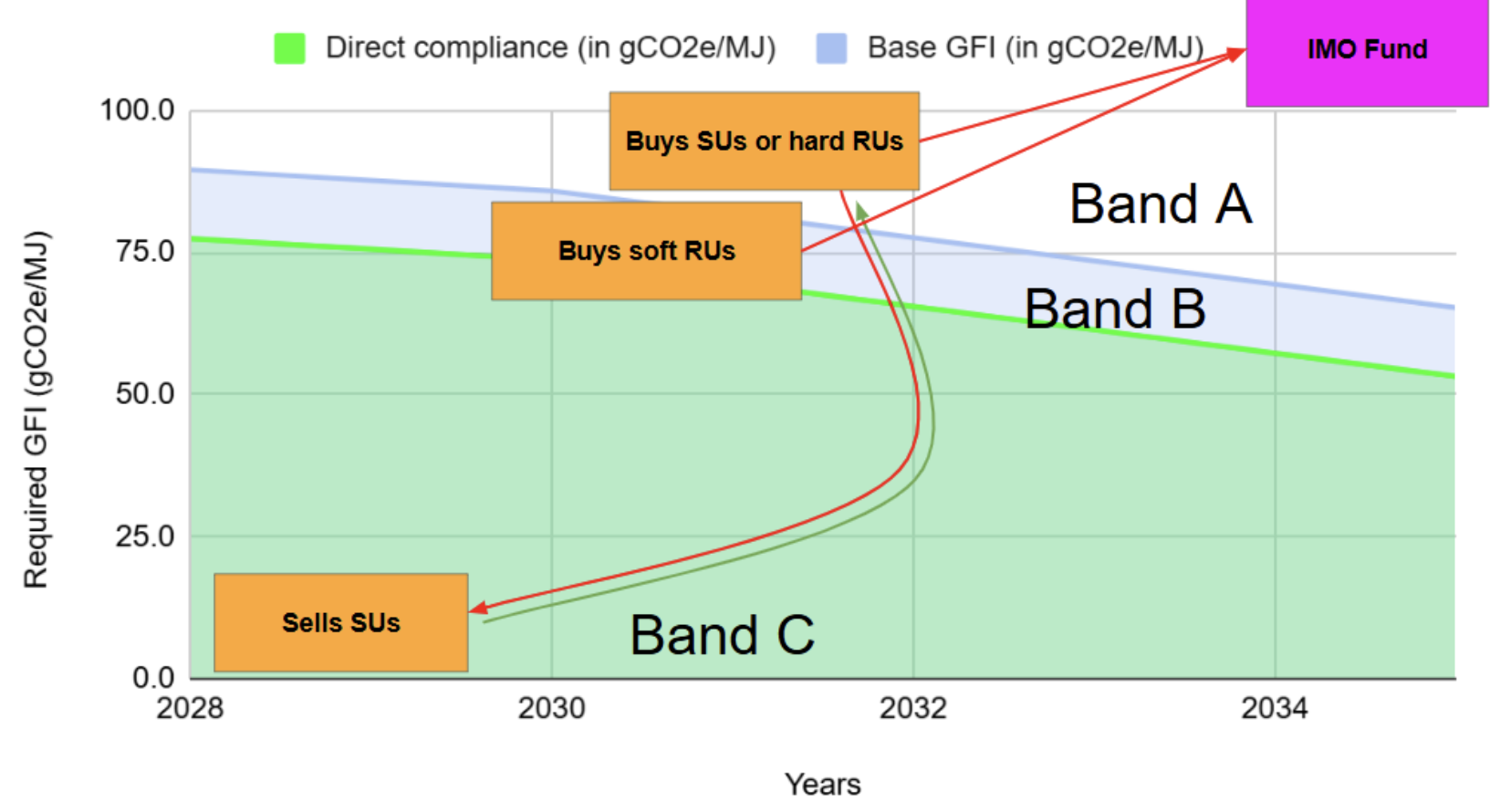
Modeling from University College London suggests that the IMO’s draft agreement could cut shipping emissions by only around 10% by 2030—well below its 20–30% target.56 Our impression is that climate advocates view the proposed policy as a step in the right direction, but have expressed disappointment at its limited ambition. The hybrid pricing system is expected to price less than 15% of emissions, compared to full coverage under an alternate proposal for a universal carbon levy.57 Although the scheme would a positive demand signal for low-carbon fuels, it does not seem strong enough to deter LNG use and has, in fact, drawn praise from LNG proponents.58
The levy could also raise $11-12 billion per year in revenues to the IMO Net-Zero Fund.59 The Fund intends to support innovation and transition initiatives in developing countries, capacity building for the IMO’s GHG strategy, and mitigate negative impacts on climate-vulnerable countries.60 Several key issues, such as the development of LCA methodology, the reward scheme for low-carbon fuels, and the exact boundaries for revenue use, are still open for further discussion in upcoming negotiations.61 Notably, the IMO’s current LCA guidelines do not account for key elements such as emissions from indirect land use change from biofuels, nitrous oxide, methane, and black carbon.62
The IMO’s draft regulations were due to be enacted in October 2025, but have been postponed by one year, due in part to pushback from major oil producers like the U.S. and Saudi Arabia.63 The delay was a major setback for green shipping, leaving the industry uncertain about future regulatory support. Future discussions may result in a modified levy, and could be considerably less ambitious than the draft agreed in April 2025. While this result demonstrates that the IMO is vulnerable to opposition from petrostates, we still have some confidence in the IMO due to its previous track record of progressive global policy.
The European Union
The Fit for 55 package was adopted in July 2023 and aims to reduce the EU’s emissions by 55% by 2030. It contains the FuelEU Maritime initiative, which aims to increase the use of sustainable fuels via objectives to reduce the carbon intensity of certain vessels’ onboard energy use by 80% by 2050, with incremental reductions starting in 2025. Also included are regulations regarding plugging into onshore electric power sources when possible. Marine fuels sold and used in the EU also became subject to tax in 2023, calculated using a sliding scale based on pollution.64
As of 2024, maritime shipping emissions were also included in the EU emissions trading scheme (ETS) for the first time. The ETS covers all ships over 5,000 metric tons entering EU ports, and will include CO2, methane, and nitrous oxide emissions.65 As such, ships burning fossil fuels will be penalized twice, under both FuelEU Maritime and ETS regulations. 20 million ETS allowances, equivalent to ~€1.6 billion ($2.1 billion), will be used to fund low-carbon innovation via the EU’s Innovation Fund.66
Nonprofits consider EU regulations as the most ambitious in the world. There has therefore been a desire among some incumbents to scrap ETS and FuelEU regulations when the IMO’s levy begins. Nonprofit advocacy will be needed to facilitate an effective integration of the two regulations.
United States
In 2022, the U.S. passed the Inflation Reduction Act (IRA), which included a Clean Fuel Production Credit that provides tax credits for marine fuels corresponding to emissions factors.67 In 2025, the Trump Administration cut the required integrity of eligible biofuels by excluding indirect land use change emissions from LCA calculations.68 The U.S. notably also rejected the IMO’s international levy, threatening ‘reciprocal measures’ to participating states.69 It has been referenced as a key actor causing the 2025 delay on the global fuel levy and has been accused of pressuring other nations during negotiations.70
Green Shipping Corridors
Green shipping corridors (GSCs) are another popular government initiative. GSCs are defined routes between two or more ports that act as demonstration routes for low-carbon fuels and technologies. In 2021, countries committed to operationalizing at least six GSCs by 2026.71 As of December 2024, 44 GSC initiatives have been announced, involving 171 governments and industry stakeholders, and six GSCs are now preparing for implementation.72
Our impression is that there has been an uptick in policies supporting the decarbonization of maritime shipping over the last five years. However, even in the presence of existing policies, this sector remains off track in terms of progress toward net-zero emissions. We think that increased policy adoption and ambition will be critical to meeting climate goals.73 See IEA's list for more examples of country-level policies relevant to decarbonizing shipping.
46 “The global scope of the IMO presents a unique opportunity to develop consistent, comprehensive global policy solutions for decarbonization.” Global Maritime Forum, 2022
47 “Shipping Regulator Falls Short of 1.5C-Aligned Climate Goals.” Bloomberg, 2023
48 “IMO currently has 176 Member States and three Associate Members” IMO, n.d. (accessed August 14, 2025)
49 “Most UN member states that are not members of IMO are landlocked countries.” Wikipedia, n.d. (accessed August 14, 2025)
50 EEXI and CII - ship carbon intensity and rating system. IMO, 2023
51 Section ‘.4 GHG emissions from international shipping to reach net zero’ IMO, 2023
52 “The IMO Net-zero Framework is the first in the world to combine mandatory emissions limits and GHG pricing across an entire industry sector. ” IMO, 2025
53 “These measures, set to be formally adopted in October 2025 before entry into force in 2027, will become mandatory for large ocean-going ships over 5,000 gross tonnage, which emit 85% of the total CO2 emissions from international shipping.” IMO, 2025
54 “It does not apply to ships that exclusively travel on domestic voyages, military vessels and other ships operating on government non-commercial service, and some additional categories of vessel.” Opportunity Green, 2025
55 Figure: Draft final J9 deal, Carbon Market Watch, 2025
56 “Taken in combination with the revision of IMO’s short-term measures (carbon intensity indicators), which have been extended with new increases in stringency to 2030, the new policy is only expected to achieve approximately 10% absolute GHG emission reductions relative to 2008 GHG emissions. This is significantly lower than the ‘at least 20%’, ‘striving for 30%’ that the IMO committed to in the Revised GHG Strategy in 2023.” Smith et al., 2025
57 Example nonprofit responses: Carbon Market Watch, 2025, Opportunity Green, 2025 “The hybrid system will not price enough emissions: for ships complying with the GHG fuel standard, less than 15% of emissions will be priced, whereas a universal levy would have priced them all.” Carbon Market Watch, 2025
58 “IMO measures unlikely to reach GHG reduction targets, but close the LNG business case and send clear long run signal for hydrogen-derived fuels.” Smith et al., 2025; “While many details need to be decided, this provides a clear decarbonisation framework for the global shipping industry and will enable all fuel pathways, be they methane (LNG), methanol or ammonia, to compete on a level playing field.” Sea-LNG, 2025
59 “A total revenue expected to generate approximately 11-12bn p.a. in the first 3 years.” Smith et al., 2025
60 “The IMO Net-Zero Fund will be established to collect pricing contributions from emissions. These revenues will then be disbursed to: Reward low-emission ships; Support innovation, research, infrastructure and just transition initiatives in developing countries; Fund training, technology transfer and capacity building to support the IMO GHG Strategy; and Mitigate negative impacts on vulnerable States, such as Small Island Developing States and Least Developed Countries.” IMO, 2025
61 “Still, many key issues such as the definition of [zero and near-zero fuels (ZNZ)], the development of life cycle assessment methodology for GHG emissions, the reward scheme for ZNZ and the exact boundaries for revenue use, are yet to be defined, most of it through guidelines, in the following months and years.” Carbon Market Watch, 2025
62 “To accurately estimate the GHG intensity of marine fuels, IMO could consider changes in four areas of its 2024 Life-Cycle Assessment (LCA) Guidelines…” ICCT, 2025
63 “IMO’s Marine Environment Protection Committee votes to adjourn discussions on the Net-Zero Framework for one year.” IMO, 2025; “Washington and Riyadh, the world's two largest oil producers, have strongly opposed a carbon price on shipping during talks in London at the International Maritime Organization (IMO).” Reuters, 2025
64 “Fossil fuels used as fuel for intra-EU air transport, maritime transport and fishing should no longer be fully exempt from energy taxation in the EU.” “Fuels will be taxed according to energy content and environmental performance rather than volume.” European Commission, n.d. (accessed August 5, 2025)
65 “Since January 2024, the EU's Emissions Trading System (EU ETS) has been extended to cover CO2 emissions from all large ships (of 5 000 gross tonnage and above) entering EU ports, regardless of the flag they fly.” “The EU ETS covers CO2 (carbon dioxide), CH4 (methane) and N2O (nitrous oxide) emissions, but the two latter only as from 2026.” European Commission, n.d. (accessed August 5, 2025)
66 “According to the Commission, 20 million allowances (i.e., about €1.6 billion with a price of €80 per allowance) should be deployed up to 2030 via the Innovation Fund to support the decarbonisation of the maritime sector.” European Commission, n.d. (accessed August 5, 2025)
67 “The tax credit amount is $0.20 per gallon for non-aviation fuel and $0.35 per gallon for SAF. For facilities that satisfy the prevailing wage and apprenticeship requirements, the credit amount is $1.00 per gallon for non-aviation fuel and $1.75 per gallon for SAF. For any taxable year, the Clean Fuel Production Credit is equal to the applicable credit amount per gallon multiplied by the fuel’s carbon dioxide emissions factor.” DoE, n.d. (accessed August 14, 2025)
68 “The final bill also retained favorable changes to feedstock and emissions rules, including limiting the origins of feedstock to the US, Mexico, and Canada and clarifying that emissions attributed to indirect land-use change will not be counted.” Crux Climate, 2025
69 “The US has launched a late bid to derail a pivotal agreement to decarbonise shipping by 2050, threatening unspecified “reciprocal measures” against states that agree to greenhouse gas emission reduction measures.” Lloyds List, 2025
70 “US officials were accused of “bullying” and “intimidation”, as nations met in London for what should have been the rubber-stamping of a decision made months ago to place a small levy on the greenhouse gases from global shipping.” The Guardian, 2025
71 “The COP26: Clydebank Declaration rallies for the creation of green shipping corridors. The goal is to establish at least six green corridors on major deep-sea routes by 2026.” Pole Star Global, 2025
72 “So far, 44 green corridor initiatives have been announced, involving over 171 stakeholders…” WEF, 2024; “Six corridors have now moved on from exploration and are preparing for real-world implementation.” Global Maritime Forum, 2024
73 “New technologies, fuels and operational measures can help reduce the industry’s greenhouse gas emissions, but without appropriate laws and policies, it will be difficult to achieve the targets set by the industry.” Dong, J. et al, 2022
Industry Commitments
While we believe that policy will be the most critical lever to ensure that maritime shipping meets climate targets, we also think that industry action will be necessary for decarbonization. Below, we briefly outline some major industry commitments:
- Cargo Owners for Zero Emission Vessels (coZEV) is a platform that brings together shipping industry customers to help accelerate the sector's decarbonization. Members of this initiative include Amazon, IKEA, Unilever, Target, and Patagonia. coZEV also established the Zero Emission Maritime Buyers Alliance (ZEMBA), an advanced market commitment for offtake agreements for zero-emissions shipping technologies.
- Katalist is a ‘book and claim’ platform, developed through collaboration between nonprofits and industry, that links buyers and sellers of low-carbon shipping through environmental attribute certificates. This approach enables companies to support demand for e-fuels without requiring that the purchased fuel be used on their own shipping routes.74
- The Zero Emissions Ship Technology Association (ZESTAs) is an industry group that aims to promote the interests of the zero-emissions ship technology industry to regulators and policymakers.
- The Skies and Seas Hydrogen Accelerator (SASHA) is an industry group aiming to promote the role of green hydrogen and DAC in low-carbon aviation and shipping via coordination and policy advocacy.
- The Global Maritime Forum has created the Getting to Zero Coalition, an alliance of over 200 companies, to push private sector and policy action on green shipping.
We think these industry initiatives could be highly influential in accelerating shipping decarbonization. However, based on the number of industry commitments and the buy-in from relatively well-funded institutions, we think we could better leverage our marginal philanthropic dollar through other sub-strategies.
74 “Because the market for low-emissions fuel like SAF is nascent, cleaner fuels are more expensive and not always available on routes where a consumer might require their use. Allowing consumers to purchase environmental attributes from clean fuel use means they can ensure a plane, ship or truck somewhere is being fueled by clean energy.” RMI, 2023
Assessment of Philanthropic Sub-Strategies
In this section, we identified eight salient sub-strategies we have seen nonprofits use to promote the decarbonization of maritime shipping, and we evaluate each sub-strategy's scale, feasibility, and funding need (see below). See Giving Green's Research Overview for more information on these metrics and our research process.
Scale, feasibility, and funding need of various approaches nonprofits use to promote the decarbonization of maritime shipping:
- Advocating for national policies to fund innovation in low-carbon technology
- Scale: High. Policy advocacy efforts for enabling technologies, such as e-fuels, complement sector-specific regulations. We think the scale is high given that the emission reductions resulting from such policies span multiple sectors.
- Feasibility: High. We rank feasibility as high, given that the cross-sector applicability of shipping innovations like e-fuels and green hydrogen results in a broader ecosystem of advocates.
- Funding Need: Medium. While policy efforts in this direction are growing, we think more funding for civil society policy advocacy will ensure that key innovation needs and market gaps are addressed. We assign a rating of medium to funding need given that groups representing multiple sectors are already engaged in this work, but continued funding remains important.
- IMO policy advocacy
- Scale: High. The IMO is a key international lever given its relatively ambitious policies, the recent success of advocacy in shaping and improving these standards, and its authority to implement measures to achieve its policy targets. Due to the Marine Policy Convention (MARPOL), IMO policies and regulations are automatically adopted into national law by all of its member states.
- Feasibility: Medium. We think the IMO will remain open to advocacy efforts from nonprofits because it has historically enacted some of the most ambitious shipping policies in the world. It continues to regularly update its policies to make them even more ambitious, and we think it will remain on this trend (See Assumption 1 of our theory of change). However, ambitious regulations may also be stifled by incumbent countries, as evidenced by the 2025 delay to enacting IMO’s proposed global fuel levy.
- Funding Need: Medium. Our impression is that most nonprofits working on decarbonizing maritime shipping centrally include IMO advocacy in their efforts. We assign a rating of medium to funding need, given that sources of funding are already present, but continued funding remains important.
- Conducting technical and market analysis for enabling technologies, such as alternative fuels
- Scale: Medium. While we think that these resources are foundational to advocacy efforts, we think that they can only achieve high impact when paired with advocacy efforts to promote policy or private sector action.
- Feasibility: High. As evidenced by the citations in this report, nonprofits and think tanks have generated a robust collection of reports that articulate to policymakers what is needed to decarbonize shipping.
- Funding Need: Medium. We think that the nonprofits working in these sectors actively publish analyses related to decarbonization. However, we still think there may be room for funding, given the ongoing need for market analysis to identify the gaps and potential mechanisms to address these gaps as the nascent market for alternative fuels and enabling technologies grows.
- Mounting legal pressure on industry, governments, financial institutions, and/or investors
- Scale: Medium. We think legal action can result in some symbolic wins for the climate narrative, including the International Tribunal for the Law of the Sea’s (ITLOS) 2024 ruling that countries have obligations to mitigate emissions in line with the Paris Agreement.75 We are unsure of the extent to which such cases will influence industry actions at large. Legal pressure could also further indirectly affect consumer awareness via media coverage.
- Feasibility: Medium. We think that certain targeted legal cases can be won, but given the cost and inherent uncertainty associated with this sub-strategy, we have medium certainty regarding its feasibility. Outside of courts, we also think that legal arguments can be used to strengthen policy and corporate advocacy.
- Funding Need: High. It is our understanding that it is uncommon for nonprofits outside of the U.S. to have lawyers on staff, especially representing small states like those who initially filed the ITLOS ruling, signaling funding need for this sub-strategy.76
- Advocating for governments to implement policies prioritizing scarce resources like hydrogen and biofuels
- Scale: Medium. We are uncertain about the scale of prioritization sub-strategies, but we think that they could lead to moderate positive impacts by increasing resource-use efficiency across energy and fuel systems. While this sub-strategy may not directly reduce emissions within the shipping sector—since it could shift biofuel use from shipping to aviation—we believe it has the potential to lower overall cross-sectoral emissions and think this is an important perspective to consider when thinking about shipping emissions.
- Feasibility: Medium. We think advocacy for hydrogen prioritization has gained traction in the EU. For example, the Commission’s 2025 subsidy auction for innovation in high-temperature heat excludes hydrogen and biomass heating. Our impression is that analysis and communications from nonprofits have led to more guardrails around the use of hydrogen in the EU. We think this advocacy framing could be transferred to other geographies and sectors because it can lead to a more efficient distribution of public funding.77
- Funding Need: High. We think cross-sectoral prioritization is generally neglected across impact areas because many advocates are focused on specific sectors, and relatively few countries include prioritization elements in their hydrogen or biofuel strategies. We think organizations across sectors could absorb more funding to mainstream this type of thinking.
- Advocating for national policies to regulate shipping emissions
- Scale: Medium. Given the international nature of shipping, we think that a patchwork of international and national policies will be critical to decarbonizing the sector, requiring a global advocacy effort. However, we think many national policies will provide limited additionality compared to IMO regulations.
- Feasibility: Medium. National policy ambition levels for maritime shipping have lagged behind those of other sectors, and incumbent industries have lobbied against emission regulations, raising the difficulty of achieving policy progress. However, we think civil society could provide a credible, balanced voice that may have the potential to positively and tangibly influence these efforts.
- Funding Need: Medium. Our impression is that most nonprofits working on decarbonizing maritime shipping have some capacity for national advocacy. We assign a rating of medium to funding need because sources of funding are already present, but continued funding remains important.
- Coordinating private sector coalitions to align on emissions reduction targets, commit to alternative fuel offtake agreements, and/or advocate for policies and regulations
- Scale: High. We think that partnerships between civil society and the private sector could be powerful given that (i) civil society can help the private sector formulate more ambitious climate stances and purchase commitments, and (ii) the private sector has a strong influence over market shaping and certain policy-making processes.
- Feasibility: Medium. We are uncertain about how far the ambition level of private sector companies can be raised as a result of advocacy, especially given the current high cost of certain climate interventions like alternative fuels.
- Funding Need: Low. Several corporate commitments have already been established, such as ZEMBA, Getting to Zero Coalition, and SASHA. Based on the number of industry commitments and the buy-in from relatively large climate nonprofits with over $100 million per year in revenue, and companies like Amazon and Maersk, we think sub-strategies related to industry commitments may have a lower funding need than our other sub-strategies.78
- Promoting green shipping corridors (GSCs) to align policies, create partnerships, and test new technologies
- Scale: High. GSCs are strategically chosen geographic regions where policies, partnerships, and technologies can be tested. Promoting them could be an effective sub-strategy as it recreates what is needed globally on a more localized and manageable scale. GSCs can have direct impacts in the range of 35 MtCO2e/year, with further impact likely to come from the indirect effects of catalyzing innovation and driving infrastructure development.79
- Feasibility: Medium. We have seen a high level of buy-in from countries and companies to gain traction to further GSCs, with 18 new initiatives announced in 2024.80 At least six GSCs have now also completed planning stages and are preparing for implementation.81 The Global Maritime Forum warned that future progress could still be bottlenecked by insufficient policy incentives to bring down the cost of low-carbon technologies.82
- Funding Need: Low. Our impression is that funding need is low, given that it is a relatively targeted intervention pursued by both coZEV and the Getting to Zero Coalition, in addition to several relatively well-funded nonprofits.83
We chose to center sub-strategies with two ‘highs’ and one ‘medium’ in our sector strategy, while also including sub-strategies with one ‘high’ and two ‘mediums’ as supplementary sub-strategies. Based on the above evaluations, we think the most viable philanthropic sub-strategy is to advocate to policymakers to incentivize low-carbon innovation. We also favorably consider sub-strategies to regulate shipping emissions, conduct technical analysis to identify critical technical and market gaps, and mount legal pressure on institutions to strengthen climate actions. We omitted prioritization sub-strategies from our sector strategy because we think they have greater implications in reducing sectoral emissions for aviation.
75 “It further finds that under UNCLOS, countries “have the specific obligations to take all necessary measures to prevent, reduce and control marine pollution from anthropogenic GHG emissions and to endeavour to harmonize their policies in this connection,” based on the best available science and relevant international rules and standards, including the UNFCCC and the Paris Agreement on climate change. While the scope and content of such measures may vary depending on countries’ capabilities, ITLOS finds they should be determined taking into account the Paris Agreement’s 1.5°C temperature goal.” SDG Knowledge Hub, 2024
76 “On 12 December 2022, the Commission of Small Island States on Climate Change and International Law (COSIS) requested the Tribunal to issue an advisory opinion on the following questions:” SDG Knowledge Hub, 2024
77 “policymakers should avoid allocating public funds to hydrogen in those sectors, as this would lead to a wasteful use of both public resources and decarbonized energy.” FCA, 2025
78 ZEMBA is facilitated by the Aspen Institute and also co-founded by Amazon, Patagonia, and Tchibo. ZEMBA, n.d. (accessed August 7, 2025). The Aspen institute made $230 million in revenue in 2023. ProPublica, n.d. (accessed August 7, 2025); Maersk is a founding member of the Getting to Zero Coalition. Getting to Zero Coalition, n.d. (accessed August 7, 2025); Katalist was launched by RMI, which had a revenue of $170 million in 2024. RMI, 2024
79 “The vessels burned approximately 11 million tonnes of fuel, releasing the equivalent of 35 million tonnes of CO2, accounting for roughly 3 percent of global shipping emissions.” Getting to Zero Coalition, 2024
80 “18 new green shipping corridor initiatives emerged worldwide in the last year alone...” Global Maritime Forum, 2024
81 “Six corridors have now moved on from exploration and are preparing for real-world implementation.” Global Maritime Forum, 2024
82 “However, initiatives risk hitting a “feasibility wall” if the cost of transitioning to sustainable energy sources is not urgently addressed by national policy incentives.” Global Maritime Forum, 2024
83 Example nonprofits: RMI, WRI, Ocean Conservancy
Theory of Change for Philanthropic Engagement
Based on the readiness of the requisite technologies, the ambition levels of current policies, and the status of private sector commitments, we developed a high-level theory of change for how philanthropic actors can push for decarbonization of the maritime shipping sector. Theories of change enable us to better understand the pathways of influence, the likelihood of each pathway, and avenues of greatest impact for philanthropic and civil society efforts.
We also discuss and evaluate the main assumptions related to the theory of change and rank whether we have low, medium, or high certainty for each assumption.84 Our assessment is based on both primary and secondary evidence, as well as our general impression of the plausibility of the assumption. Importantly, several of the stages of this theory of change may not be amenable to easy measurement or quantification, are not supported by a robust evidence base, or are expected to occur in the future but have not yet occurred.

Evaluating Key Assumptions
1. Advocacy efforts result in more ambitious IMO and national government regulations. (high certainty)
We think the IMO is a key political lever given its relatively ambitious policies, its openness to advocacy efforts to shape and improve these standards, and its authority to implement measures to achieve its policy targets. While the targets of the IMO remain some of the most progressive to date, it needs to incorporate stronger commitments and clarity to meet the Paris Agreement, to which it is explicitly aligned.85 Discussions on the IMO’s proposed global fuel levy are ongoing and we think further advocacy windows will open up to close the gap in ambition.
There are also meaningful opportunities for national frameworks, like FuelEU, to increase innovation funding and address the gaps that remain in the IMO framework proposed in April 2025. These include the absence of regulations to support zero-emission fuel infrastructure and bunkering standards; limited scope to drive innovation; and the exclusion of certain journeys from IMO coverage, such as domestic and subnational routes, voyages by vessels under 5,000 tonnes, and trips by certain types of vessels like oil tankers.
2. Low-carbon shipping can become cost-competitive with conventional shipping. (medium certainty)
Although the current green premium remains a barrier to adoption, we think that a combination of declining costs for low-carbon technologies and increasing regulatory pressure on fossil fuel prices could plausibly lead to price parity. In fact, estimates for e-fuel parity range from 2030 to 2040.86 Notably, under existing regulations, e-ammonia ships built today could already achieve cost competitiveness over their lifetime compared to conventional vessels.87
We think reducing costs for low-carbon shipping is highly contingent upon scaling renewable energy, increasing the availability of green hydrogen, and building out global e-fuel infrastructure. Given cross-sector demand and the uptick in supply-side hydrogen policies, we have medium certainty that green hydrogen can become cost-competitive and be scaled to meet the needs as a feedstock for these fuels.
3. Advocacy efforts increase government spending on innovation for low-carbon shipping and enabling technologies. (high certainty)
Many national governments, including the EU and China, frame cleantech innovation not only as a climate imperative but also as a driver of industrial competitiveness, supply chain resilience, and leadership in emerging green markets.88 Notably, one of the key sectors of Japan’s Clean Energy Strategy is hydrogen and ammonia.89
We think national governments have demonstrated a strong willingness to drive clean technology innovation through public investment. For example, the EU committed €530 million ($620 million) to R&D for zero-emissions waterborne transport and €1 billion ($1.16 billion) to green hydrogen development.90 The U.S. also introduced substantial incentives through its Clean Hydrogen Tax Credit (45V), Japan introduced a $2.7 billion Hydrogen Strategy, and Canada committed $150 million CAD to green ports and shipping vessels ($110 million USD).91 In parallel, as more governments adopt regulations to curb maritime emissions, we expect growing advocacy opportunities to direct revenues towards low-carbon innovation.92
4. Policies set by the IMO and national regulations will influence the private sector to transition to low-carbon technology. (medium certainty)
We chose not to prioritize direct advocacy with the private sector because we think government advocacy could provide greater leverage to influence private sector decarbonization trends. For example, pricing emissions can narrow the green premium for green shipping technology, which would directly improve the business case for low-carbon technologies like e-fuels.
Furthermore, well-designed policies with ambitious targets, like the FuelEU Maritime initiative, can provide long-term market signals to reduce investor uncertainty. The IMO’s proposed fuel intensity targets have been credited in giving a clear signal towards low-carbon fuels, meaning that incremental solutions are unlikely to remain competitive in the mid/late 2030s, but there remains uncertainty regarding its ambition levels, which may lead some investors to take a wait-and-see approach.93 While the industry is still at the relatively early stages of its transition, strong policy signals can reduce the risk of locking into infrastructure that uses fuels, like biofuels and LNG, that are cheaper and more mature than e-fuels, but have less mitigation potential.94 Reducing the risk of lock-in is especially important given the long lifetime of shipping vessels (several decades).95
The IMO’s global role in international coordination also reduces the risk of carbon leakage, where firms shift activity to avoid stricter national or regional rules. Harmonized regulations ensure a level playing field across the sector, increasing the certainty of demand for low-carbon technology.
84 We describe our certainty as low/medium/high to increase readability and avoid false precision. Since these terms can be interpreted differently, we use rough heuristics to define them as percentage likelihoods the assumption is, on average, correct. Low = 0-60%, medium = 60-80%, high = 80-100%
85 “The IMO’s strategy isn’t currently binding, and it lacks specific measures to achieve its stated targets. Nevertheless, it represents significant progress from previous positions. However, the absence of alignment with the 1.5° C target is a major shortfall.” ClimateWorks, 2023; IMO is committed to supporting UN Sustainable Development Goal 13 - to take urgent action to combat climate change and its impacts - and the Paris Agreement by reducing greenhouse gas (GHG) emissions from shipping.” IMO, n.d. (accessed August 7, 2025); “The Climate Action Tracker (CAT) currently rates the IMO’s overall climate ambition as “Highly Insufficient”, which means that if all countries were to follow the same level of ambition, warming would reach 4oC.” Climate Action Tracker, 2025
86 “Some estimates show that such policy support could help achieve price parity between green ammonia and current fossil fuels between 2030 and 2035.” ClimateWorks, 2025; Fuel production cost estimates and assumptions. Lloyd’s Register, 2019
87 “All three ammonia fueled ships evaluated were able to comply with or outperform the new FuelEU Maritime targets at a cost equal to or below that of a conventional heavy fuel oil powered ship.” CATF, 2024
88 EU: “Growing challenges such as climate change, artificial intelligence and geopolitical tensions are changing the world we live in. In order to thrive in this new landscape, we need to ensure that Europe is a place where growth and innovation can continue to be fostered.” European Commission, n.d. (accessed August 8, 2025); China: “The 14th FYP specifies that the focus will be on strategic emerging industries, including next‑generation information technology, biotechnology, new energy, new materials, high‑end equipment, new‑energy vehicles, green and environmental protection technology, aeronautics and astronautics and marine equipment.” HKTDC Research, 2021
89 “In order to survive the severe international competition in the clean energy sector, large-scale investment is to be brought into the fields with high potential such as hydrogen/ammonia by increasing predictability.” METI, 2022
90 “Horizon Europe devotes EUR 530 million for research and innovation through the Zero Emission Waterborne Transport Partnership.” European Commission, 2025
91 “Japan’s national R&D has allocated $2.7 billion to finance the development of large-scale hydrogen supply chains, while $700 million has already been allocated for hydrogen generation projects.” WEF, 2023
92 “Still, many key issues such as the definition of ZNZ, the development of life cycle assessment methodology for GHG emissions, the reward scheme for ZNZ and the exact boundaries for revenue use, are yet to be defined, most of it through guidelines, in the following months and years.” Carbon Market Watch, 2025
93 “The introduction of a fuel intensity target (base GFI), which sets to decrease by at least 65% by 2040, means that incremental solutions are unlikely to remain competitive in the mid/late 2030s” “This raises concerns about whether the fund will be able to simultaneously support early deployment of ZNZs and deliver the promised support for a just and equitable transition. This may therefore lead to a cautious, wait-and-see approach.” IDDRI, 2025
94 “If investors expect pressure to reduce carbon emissions (regulatory or otherwise) to be delayed or weak, transition pathways that can make use of mature but less-scalable or sustainable elements (e.g., bioenergy, LNG) may gain an advantage. If expectations are that the speed of the transition will be in line with the 1.5-degree pathway described in Chapter 1, then these pathways may feature risks of disruption and stranded assets.” UMAS, 2021
95 “Given that the life of shipping investment spans over several decades, there is therefore a risk of carbon lock-in and/or stranded assets to public and private investors in the sector.” IDDRI, 2025
What is the Cost- Effectiveness of Reducing Shipping Emissions?
We use the cost-effectiveness analysis (CEA) we developed in 2024 for Opportunity Green's work with the IMO to enact regulations that decarbonize international shipping as a proxy indicator for the cost-effectiveness of reducing shipping emissions.
In this analysis, we compared the shipping sector's cumulative emissions from 2025 to 2050 under two scenarios with different ambition levels. The high-ambition scenario assumes that IMO enacts sufficient regulations in 2025 to meet its decarbonization plan, and the BAU scenario is a counterfactual scenario where regulations in 2025 are still passed but are insufficient to meet IMO's decarbonization targets. We assumed that regulations for the BAU scenario catch up to the high-ambition regulations within ten years due to future increases in political momentum and technological capabilities for green shipping. Our best guess is that Opportunity Green’s IMO advocacy will avoid one tCO2e for around $0.76 (range: $0.03-$7.70). See the model for high-level explanations as well as additional notes and citations.
This CEA is likely not generalizable to the overall cost-effectiveness of reducing shipping emissions, and it includes highly subjective guess parameters, so it should not be taken literally. Instead, it serves as a high-level sense-check of whether mitigation efforts in this area could be highly cost-effective. Overall, we think this strategy to reduce shipping emissions could plausibly be within the range of cost-effectiveness we would consider for a Top Nonprofit.96 Though we have low confidence in this CEA, we generally view it as a positive input to our overall assessment of reducing shipping emissions.
96 As a heuristic, we consider something to plausibly be within the range of cost-effectiveness we would consider for a top recommendation if its estimated cost-effectiveness is within an order of magnitude of $1/tCO2e (i.e., less than $10/tCO2e).
Is There Room for More Funding?
According to ClimateWorks’ data, funding for maritime shipping has been growing, with annual philanthropic spending more than tripling between 2018 and 2022. Still, it reached only $16 million in 2022, equivalent to 0.13-0.21% of philanthropic funding for climate change.98 ClimateWorks has not reported specific funding data for shipping since 2022, so we are unsure if it has sustained this growth rate. We estimate it still comprises <25% of the $132 million of annual foundation support for reducing transport emissions.99
In terms of broader climate funding from the public and private sectors, The Climate Policy Initiative’s (CPI’s) Global Landscape of Climate Finance found that in 2022, shipping received $6 billion (1.5% of the total of the $409 billion going towards transport).100 Revenues from the IMO’s shipping levy could generate a further $11-15 billion per year, but this total is far below the $2.6 trillion in shipping investment WEF estimates is required to reach net zero by 2050.101 Furthermore, as of 2024, only a reported 4% of the near-zero shipping fuel plants needed by 2030 were financed.102
Notable funders for shipping decarbonization include the ClimateWorks Foundation, which gave $7 million in 2023, and the Bezos Earth Fund, which gave $12.5 million in 2020, but has not made further grants since then.103 Work to decarbonize shipping can also pull from large funding sources interested in cleaner oceans, such as the $300 million Ocean Resilience & Climate Alliance and the $120 million Oceankind.104 Based on the low levels of green shipping finance reported by ClimateWorks and CPI, we think ocean shipping decarbonization seems to be a minor portion of these organizations’ grants.
Due to the low share of philanthropic and broader climate funding going towards shipping decarbonization and the large funding gaps present for the shipping sector to meet climate targets, we think that efforts to decarbonize maritime shipping have been relatively underfunded compared to other climate interventions.
97 “From 2018 to 2022, foundation giving to the sector more than tripled, reaching $16 million in 2022.” ClimateWorks, 2023
98 Calculation: 16/[7800,12800] = 0.13-0.21% ibid; “Total philanthropic giving by individuals and foundations – essentially unchanged from 2021 – reached an estimated $811 billion in 2022, of which $7.8 billion to $12.8 billion was directed to mitigate climate change.” ClimateWorks, 2023
99 Data averaged between 2019 and 2023 from Figure 3: Known foundation support to regions, sectors, and strategies, 2019 to 2023, USD millions. ClimateWorks, 2024
100 Table A.6: Breakdown of Transport Sector climate finance by sub-sector (USD billion), data download CPI, 2024
101 “Estimates suggest the mechanism could generate approximately $10-15 billion annually until 2035.” Opportunity Green, 2025; “Achieving net zero by 2050 for shipping requires approximately $2.6 trillion, out of which around $2 trillion is required for ZEFs production facilities and around $0.6 trillion to retrofit the existing fleet with ZEF-compatible engines.” WEF, 2024
102 “Only 4% of the 100 near-zero-emission shipping fuel plants needed by 2030 (as per MPP) are currently financed.” WEF, 2024
103 Page 5 (figure): Grantmaking & global programs, ClimateWorks, 2024; Bezos Earth Fund, 2020
104 “Ocean Resilience and Climate Alliance Continues to Gain Momentum as it Reaches $300 Million in Commitments and Announces New Director” PR Newswire, 2024; “the organization has distributed over $120 million in grants to organizations focused on oceanic conservation and the development of technologies that further that goal, including studying large-scale geoengineering proposals.” Influencewatch, n.d (accessed August 8, 2025)
Are There Major Co-Benefits or Potential Risks?
Co-Benefits
- Improved air quality: Switching from fossil fuels to e-fuels reduces emissions from sulfur oxides, nitrogen oxides, and particulate matter. Shipping emissions lead to an estimated 250,000 premature deaths and ~6.4 million childhood asthma cases annually.105 They are especially harmful to port communities, which often have lower incomes, due to their proximity to pollution sources.106
- Technological spillover: There is considerable technological overlap between low-carbon technologies in shipping and other sectors. E-ammonia has cross-sectoral applications, including in agriculture, heavy industry, and power generation.107 Developing processes and supply chains to produce e-fuels could also enhance decarbonization in other transport sectors, and supporting the scale-up of electrolyzers and hydrogen distribution networks would advance the hydrogen economy.
Potential Risks
- High resource intensity: Alternative fuels can be highly resource-intensive. Heavy reliance on biofuels could exacerbate food security and drive land-use change emissions, while scaling up e-fuels would require substantial renewable energy.
- Health and ecosystem risks of ammonia: The potential adverse effects of ammonia fuels are poorly understood.108 Widespread adoption of ammonia fuels would increase the risk of releasing nitrous oxide, reactive nitrogen, and unburned ammonia emissions. Nitrogen oxides reduce air quality, and reactive nitrogen can cause eutrophication and impact marine ecosystems.109 Unburnt ammonia is also toxic and poses a risk to handling workers and the environment if not properly contained.110 Strong regulations could be critical to managing the risks associated with ammonia fuels.111
105 “Despite these reductions, low-sulphur marine fuels will still account for ~250k deaths and~6.4 M childhood asthma cases annually, and more stringent standards beyond 2020 may provide additional health benefits” Sofiev et al., 2018
106 “Port communities, which are often lower-income and communities of color, bear a disproportionate share of these impacts due to their proximity to these pollution hotspots.” Ocean Conservancy, 2024
107 Section: What’s the future for green ammonia? The Royal Society, n.d. (accessed August 13, 2025)
108 “Ammonia has been proposed as a shipping fuel, yet potential adverse side-effects are poorly understood.” Wolfram et al., 2022
109 “However, excessive Nr in water and air leads to environmental damages such as eutrophication and air pollution, threatening ecosystems and human health.” Wolfram et al., 2022
110 “Ammonia is highly toxic, flammable and corrosive. It is a risk for humans and aquatic life in case of accident and leakage, requiring strict safety standards, measures, and training.” Global Maritime Forum, 2022
111 “We argue that if nitrogen releases from ammonia are not tightly controlled, the scale of the demands of maritime transport are such that the global nitrogen cycle could be substantially altered.” Wolfram et al., 2022
Key Uncertainties and Open Questions
- The need for private sector engagement: We have not prioritized direct engagement with the shipping industry in our strategy. While there are some notable private sector leaders, we think that, on the margin, government advocacy would currently provide greater leverage to influence the private sector. However, it is feasible that the private sector may still require significant additional pressure, in addition to supportive policy measures, to make substantial strides towards decarbonization.
- Transformative battery innovation: In many end-use applications, including those in road transport and heating, electric technology has become dominant over hydrogen-based alternatives due to their high energy efficiency. Although currently limited in range, we think it is feasible that innovation in batteries and hybrid ships will significantly increase the mitigation potential of electric shipping. In that case, they could be a preferable decarbonization pathway than using e-fuels.
- The scalability of e-fuels: Given their technological readiness, uncertainties regarding full life-cycle emissions, and concerns around sources and availability of sustainable biomass, we have emphasized the role of e-fuels in decarbonizing maritime shipping to protect against overreliance on biofuels. We may be wrong about this, especially if (i) renewable electricity deployment is unable to keep pace with the pace of electrification across sectors, and (ii) e-fuels are unable to become cost-competitive and scale quickly enough to meet the demands across sectors.
- Long ship lifetimes: Given the long lifetime of shipping vessels and infrastructure (multiple decades), we have uncertainties about how long it will take for low-carbon shipping technologies to become mainstream. We are cautiously optimistic given the rising popularity of dual-fuel ships, which represented 7.4% of the global fleet in 2024.112 We think the long lifespan of shipping infrastructure also increases the need for early action, as emission reductions may not occur for decades.
- Funding need: We have only included estimates for philanthropic funding directed specifically toward reducing shipping emissions. We recognize that efforts to promote alternative fuels and other enabling technologies could potentially influence the decarbonization of these sectors, but do not include this funding because (i) it is difficult to estimate given cross-sector applicability and (ii) we do not think that this would significantly change our assessment of funding need.
112 We note that the purchase of dual fuel ships will not automatically lead to more e-fuel use, but rather removes one barrier to the use of e-fuels. “The past few years have witnessed a significant increase in clean fuel-powered ships, with the global dual-fuel fleet currently standing at 2,119 vessels with a combined capacity of 123 million gross tons.” “The world fleet of eco-friendly vessels featuring dual-fuel engines now represents 7.4% of the entire global fleet by gross tonnage.” Offshore Energy, 2024
Bottom Line and Next Steps
In summary, emissions from maritime shipping currently make about 3% of global emissions and are expected to increase significantly in the coming decades. Based on our research into sub-strategies that could decrease shipping emissions, we believe advocacy for national governments to incentivize low-carbon innovation can substantially reduce emissions. We also favorably consider sub-strategies to advocate for ambitious regulations at the IMO, to conduct technical analysis to identify critical technical and market gaps and mount legal pressure on institutions. Due to the low level of funding this impact area has received and the strength of available policy levers, we plan to consider organizations working on these topics for our Top Nonprofits and as potential grantees from the Giving Green Fund.
Acknowledgments
This work has greatly benefited from the feedback provided by a variety of advisors, experts, and reviewers throughout the research process; Giving Green is grateful for those who shared their time, experience, and ideas. We would especially like to acknowledge the principal reviewer for providing a deep review of this strategy report during its final stages of development.113 All opinions remain those of Giving Green alone and any remaining errors are our own.
113 Our principal reviewer is affiliated with a shipping company, and chose to remain unnamed so that their reviews would not be conflated with company views.
Support Our Work
Giving Green Fund
One fund. Global impact. One hundred percent of your gift supports a portfolio of high-impact climate organizations, vetted by our research.
Best for:
Donors who want the simplest way to impact multiple climate solutions.
Top Climate Nonprofits
Meet the organizations on Giving Green’s list of high-impact nonprofits working to decarbonize our future, identified through our rigorous research.
Best for:
Donors who want to give directly and independently.
Support Our Work
We thoroughly research climate initiatives so you can give with confidence. For every $1 we receive, our work unlocks another $21 for effective climate solutions.
Best for:
Donors who want to amplify their impact through research.

.png)

.png)

.png)





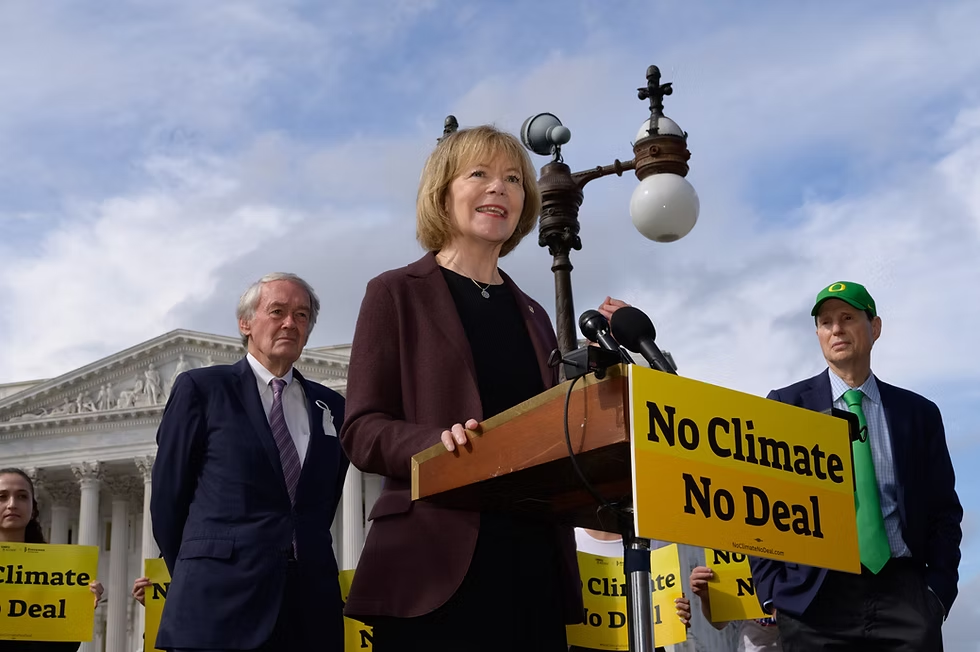
.png)

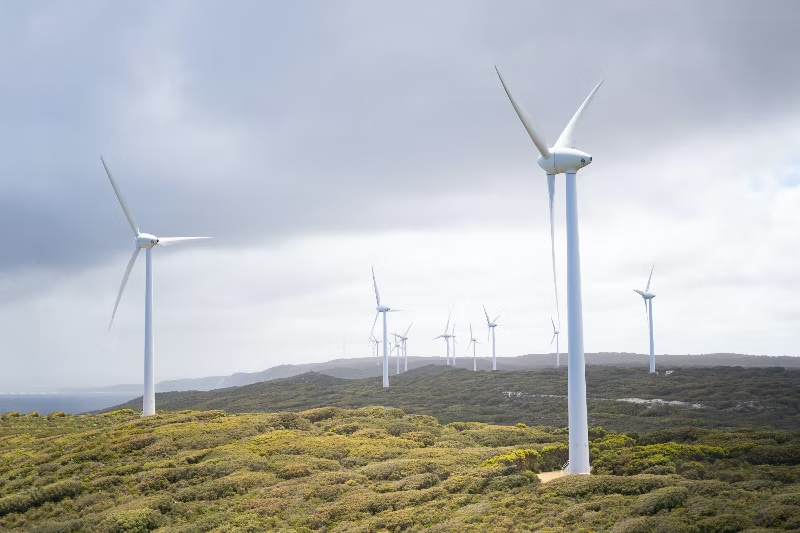
.png)

.png)

.png)
.png)

.jpg)
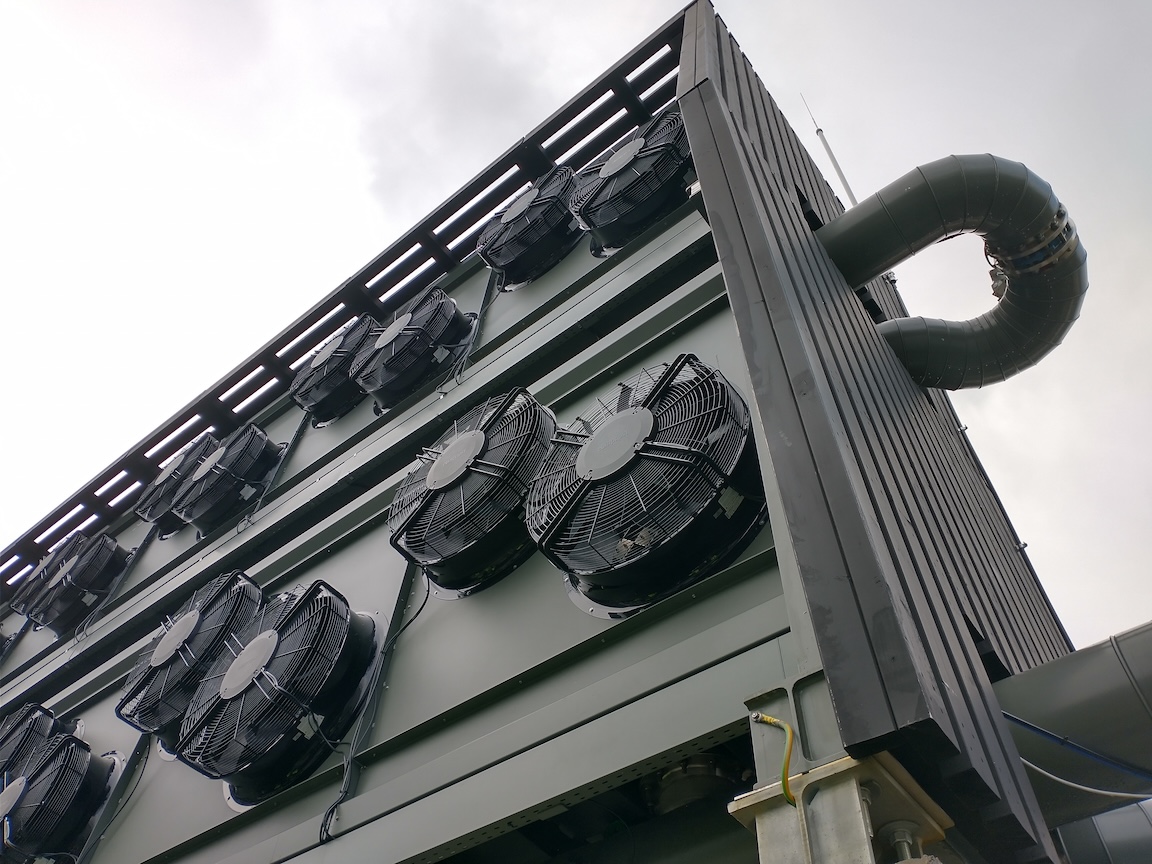
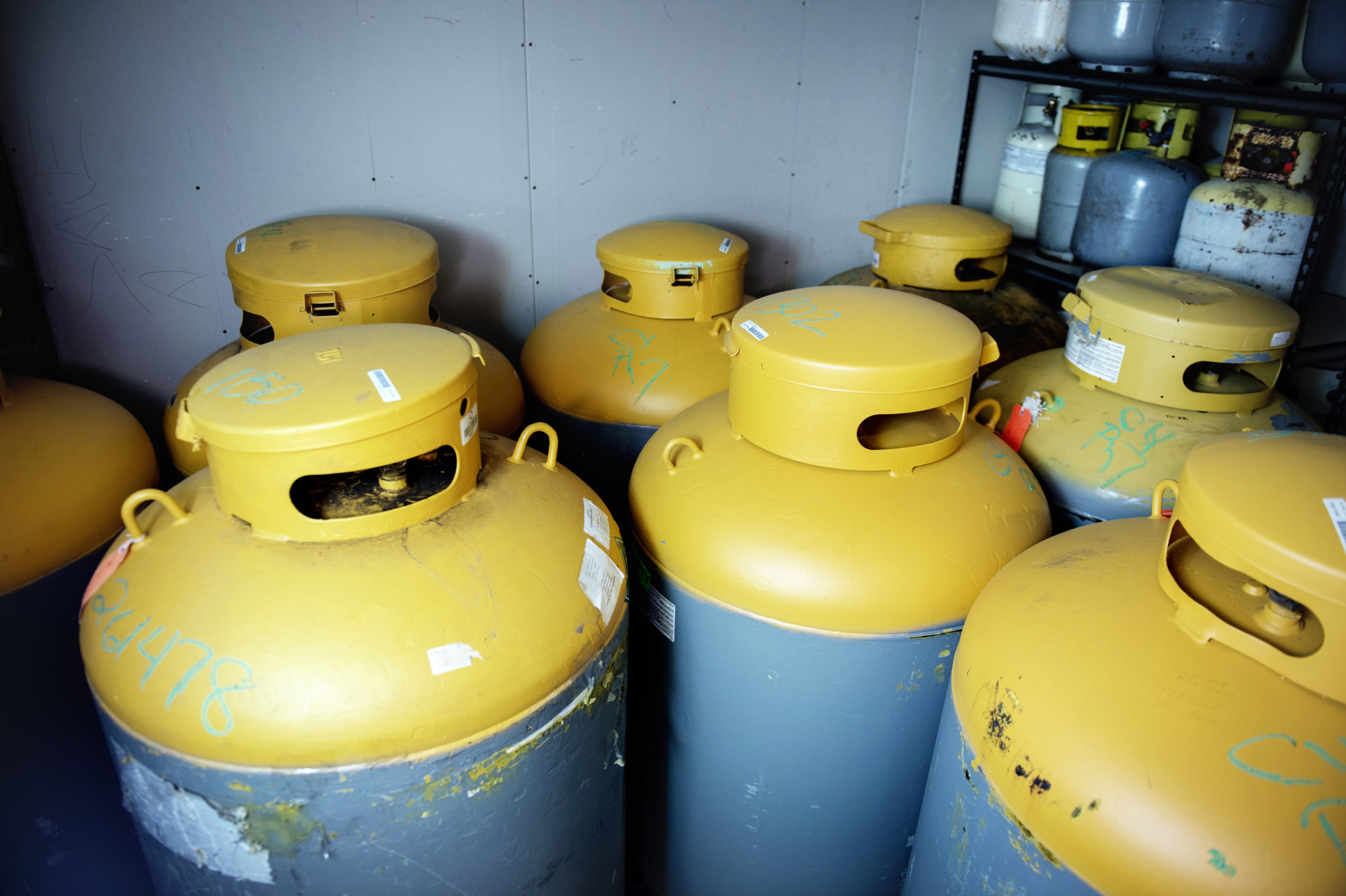
.png)
.png)
.png)

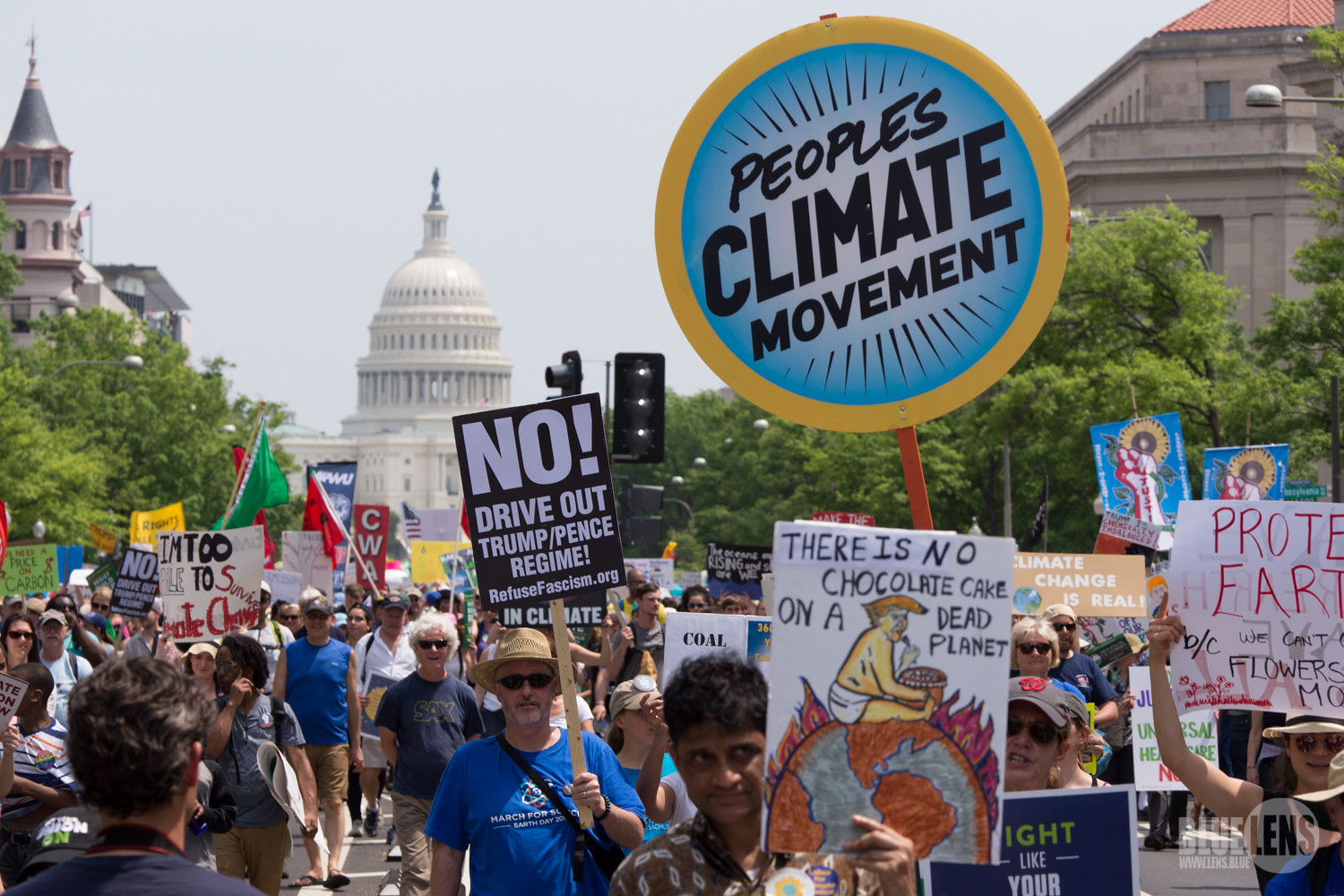

.png)
.png)
.png)


.png)





.png)
.png)


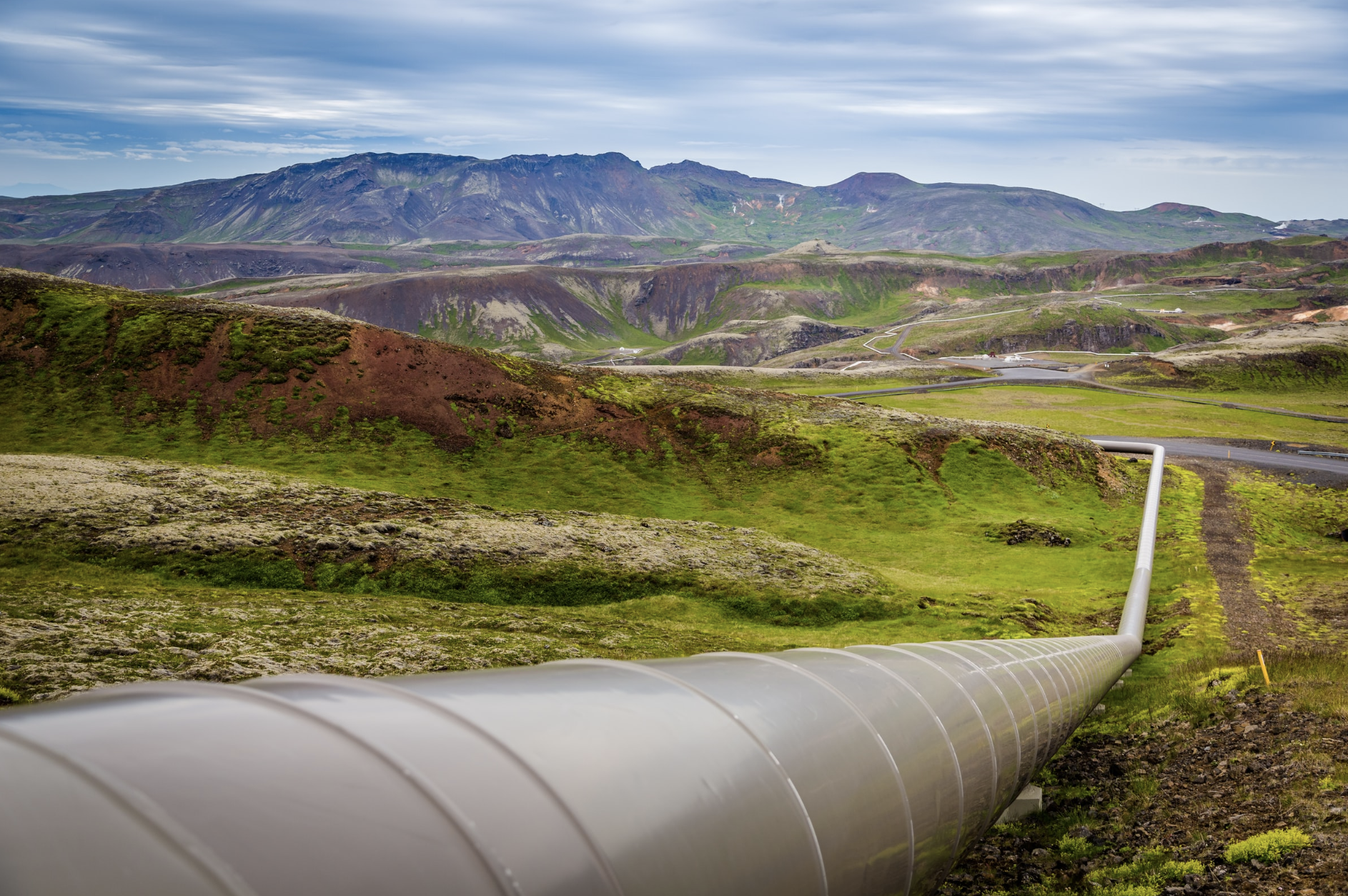


.png)
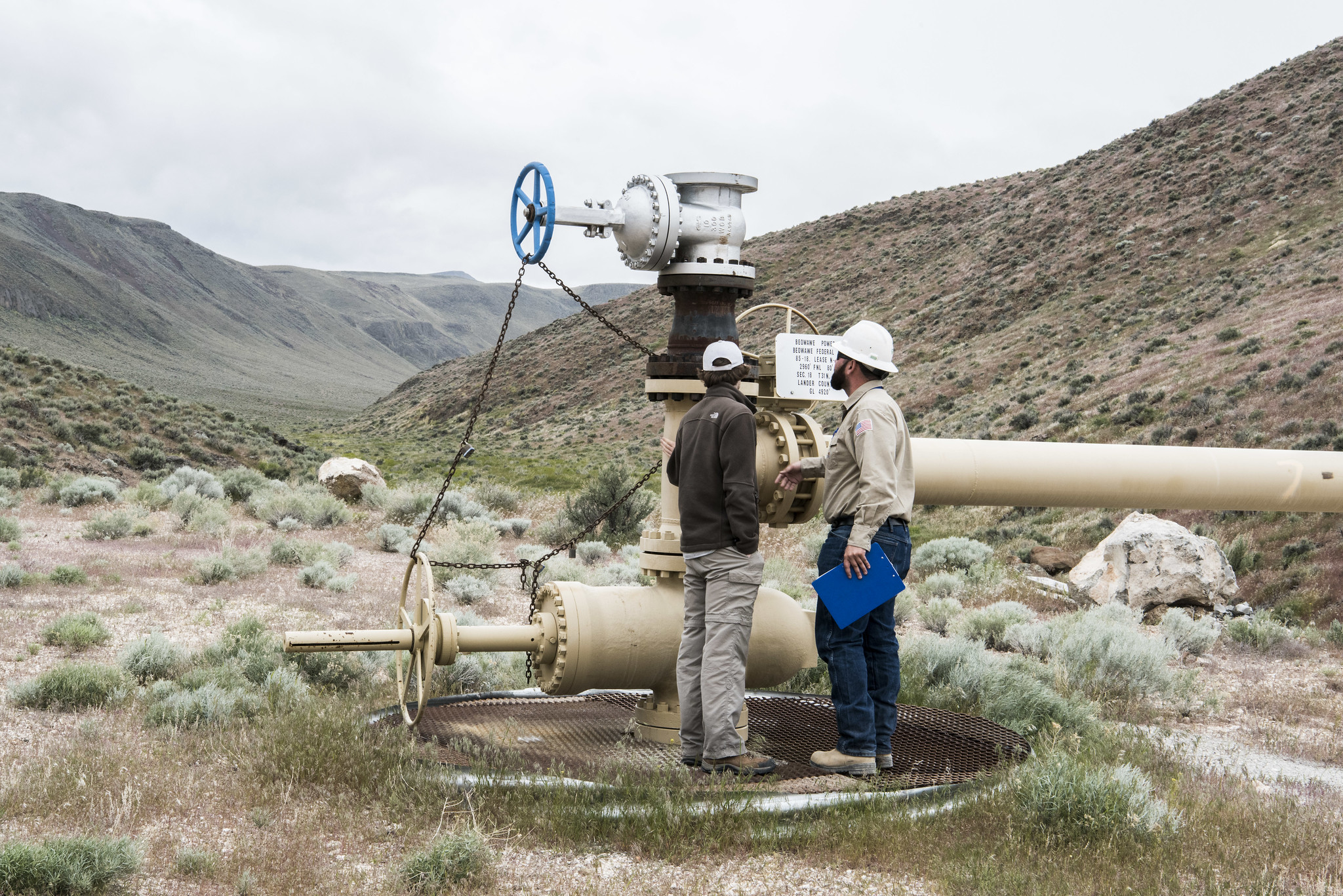

.png)
.png)





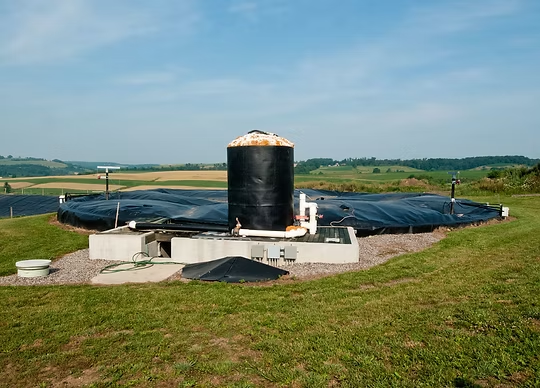
.png)
.png)



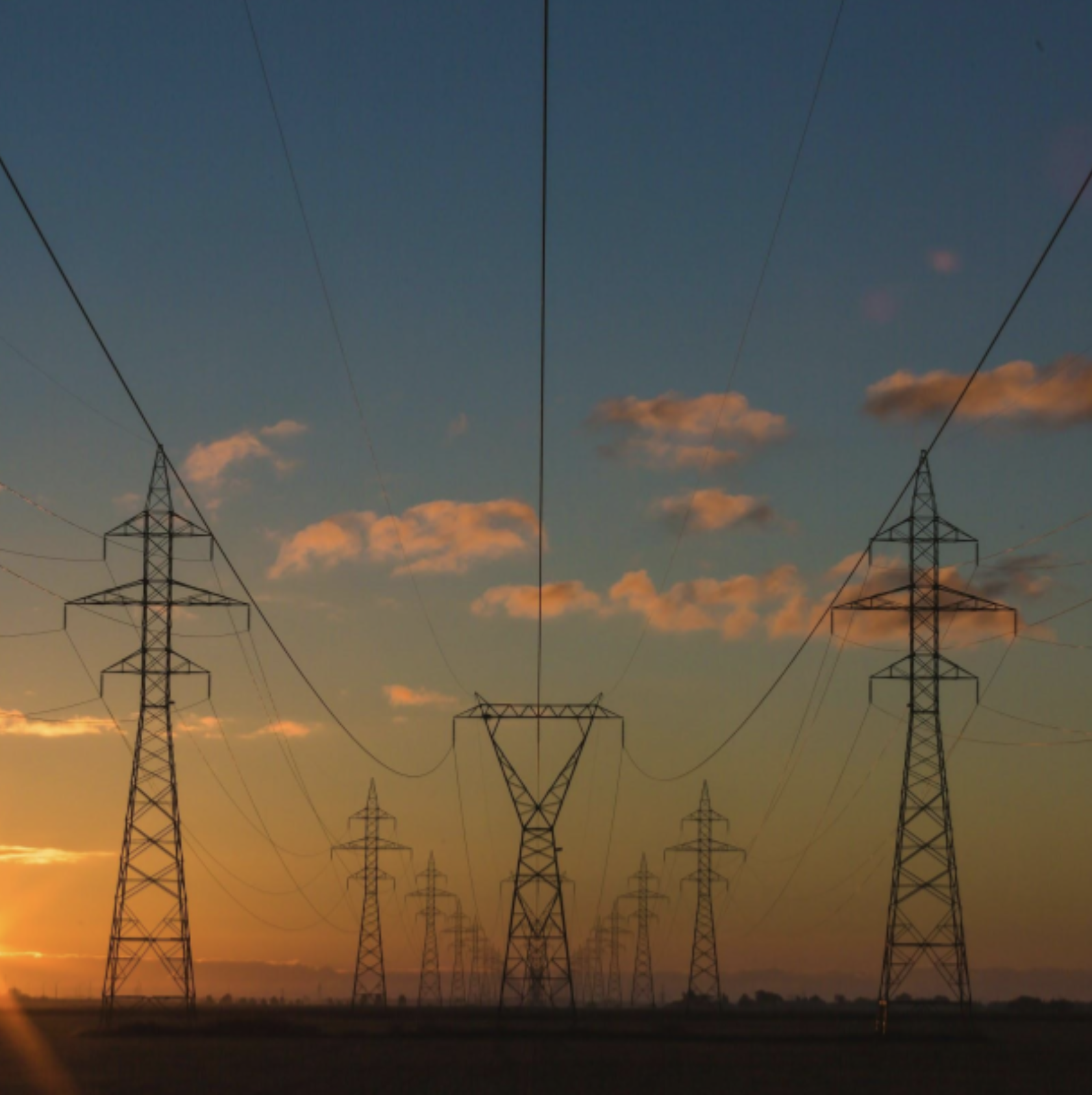


.png)

.png)


.png)


.png)
.png)
.png)
.jpg)


.png)
.png)

.png)

.png)

